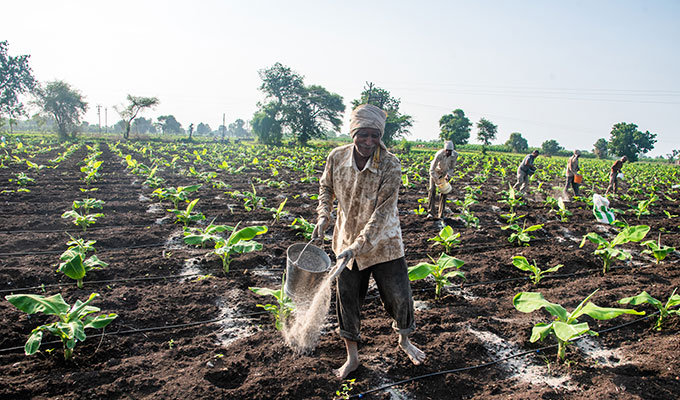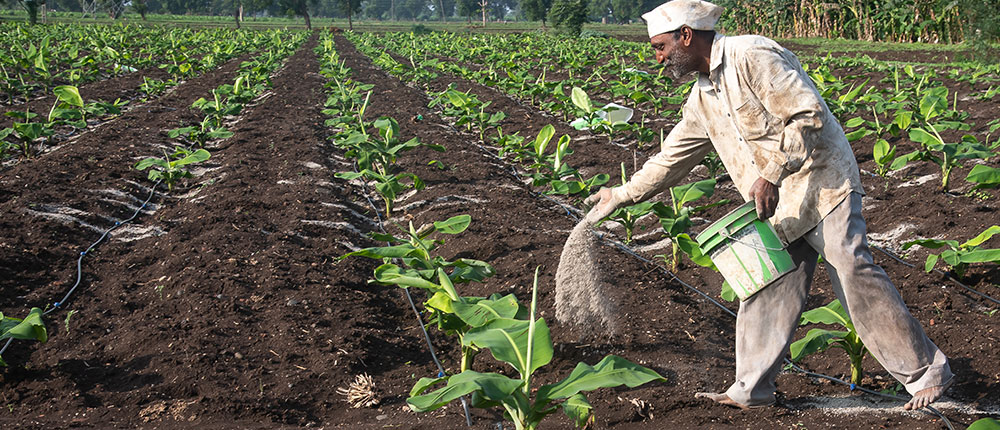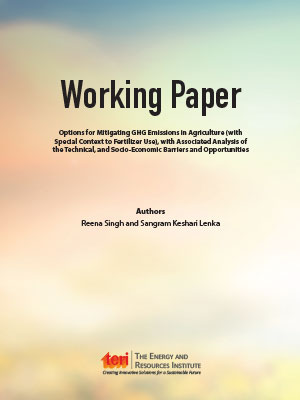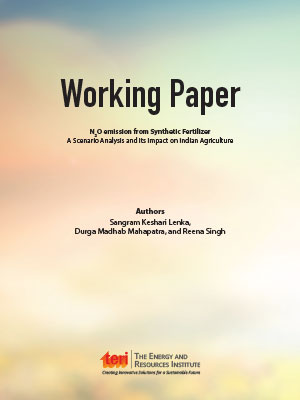Mitigating Emissions from Fertiliser Use and Enhancing Land Quality

This activity aims to develop different scenarios of fertiliser use in the agriculture sector, its implications for greenhouse gas emissions and impacts on land.
With an aim to reduce emissions and minimise the negative impact on land due to fertiliser use in the agriculture sector, this activity will develop mid-term and long-term strategies, including technology intervention. This will be done at three levels: the crop level, the farm system level and at the level of food systems. Specific case studies on the identified key technological innovations will be developed along with socio-economic impact assessment of the successful key technological innovations.
Working Paper 1: Options for Mitigating GHG Emissions in agriculture (With Special Context To Fertilizer Use), with Associated Analysis of the Technical, and Socio-Economic Barriers and Opportunities

Emissions from synthetic fertilizers consist of N2O gas from synthetic nitrogen additions to managed soils. Specifically, this is the second-largest contributor of GHG emissions from the Agriculture sector after the enteric fermentation and estimated to upsurge substantially further in foreseeable future. Therefore, massive emission from this sub-sector needs considerable attention to reduce emissions by the use of next-generation technologies and policy measures. The quantity of crops produced per unit of applied fertilizer has continuously decreased to very low values and fertilizer use efficiency remains low. Approaches such as deep placement of super granules, controlled-release fertilizers, and nitrification inhibitors based on reducing N losses have been successful in improving fertilizer use efficiency but to a limited extent. To meet future challenges this paper recommends following key measures
- Plant breeding and genetic modifications to increase the uptake of nitrogen by the crop so that less fertilizer is needed to achieve the same yields should be taken forward.
- Decision support tools for better managing input management (timing, rate, and type).
- Regular soil testing to develop appropriate nutrient management plans.
- Technologically advanced fertilizers. Examples include slow-release fertilizers and nano-fertilizers
Effective GHG mitigation in the major cropping systems in India needs know-how, proper technology dissemination channel, financial reward system, and government policies. There is a need for a multidisciplinary approach with multiple R&D institutions, and farmers and policymakers to collectively address this complex challenge and meet the national sustainable development goals.
Working Paper 2: N2O emission from Synthetic Fertilizer - A Scenario Analysis and its Impact on Indian Agriculture

Emissions from synthetic fertilizer need considerable attention in order to ensure greenhouse gas (GHG) reduction. The emissions can be reduced by adoption of suitable technologies and appropriate policy measures. The impact of augmented irrigation on direct N2O emissions has been studied in many cropping systems across the globe. We conducted simulation studies to understand the impact of the interaction of tillage and augmented irrigation on direct N2O emissions from rice fields, five cases were considered i.e a) No Till with Sprinkler b) Conventional Till with Sprinkler c) Smart and Intermittent irrigation d) Drip Irrigation and e) Low Volume Irrigation. Among these conventional tilling with sprinkler irrigation systems found to be best land and irrigation management practices for managing N2O emissions from rice filed in long run. Similarly, ecological fertilization approaches along with reduced nitrogen loads aids in improved N use efficiency that is realizable to offset drastic N2O emissions. Thus, the integration of improved packages and practices of crop cultivation along with crop genotypes has a significant potential for offsetting current trends in GHG emissions towards achieving sustainable developmental goals.


